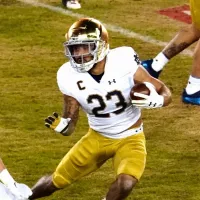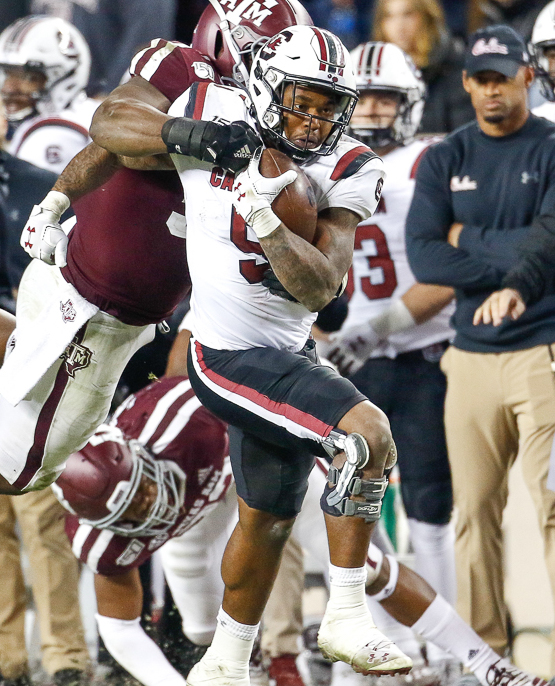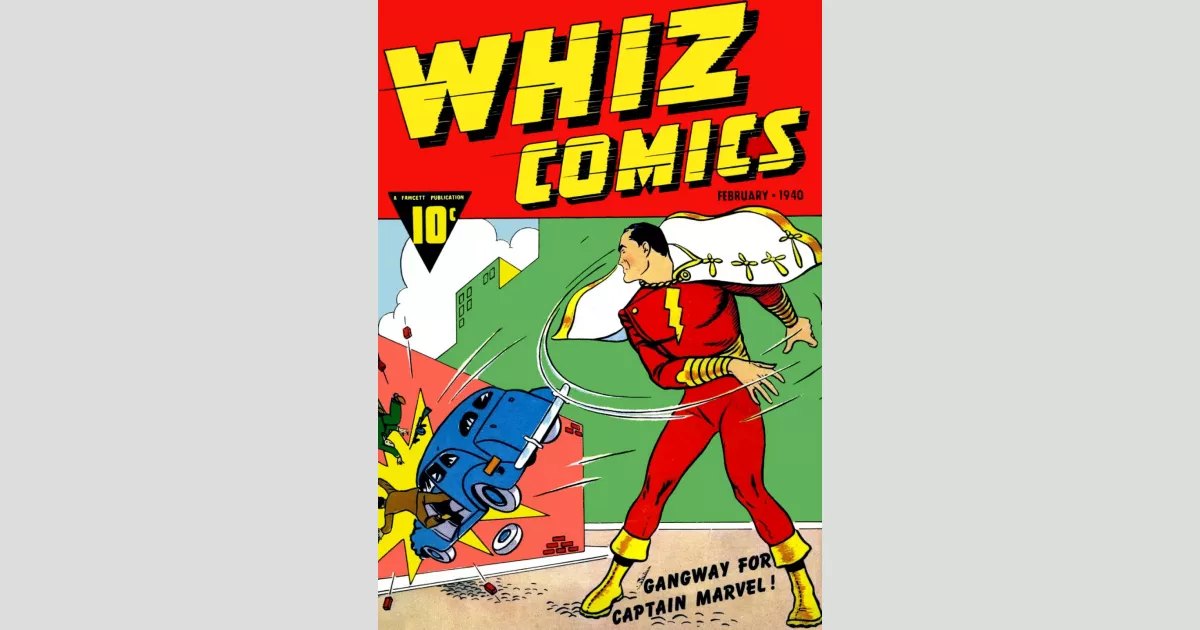Superheroes are fictional characters with extraordinary abilities who often wear costumes to hide their identities. They typically use their powers to fight crime, protect the public, and make the world a better place. Superhero stories, popularized in American comic books and Japanese media since the 1930s, form a distinct genre in fiction.
1903: The Scarlet Pimpernel Popularizes the Masked Avenger
The British play The Scarlet Pimpernel, released in 1903, and its spinoffs popularized the concept of a masked avenger and the use of a secret identity in superhero stories.
1909: L'Oiselle Debuts
The French character L'Oiselle, who can be classified as a superheroine, was created in 1909.
1914: Jimmie Dale and Sarutobi Sasuke Introduce New Superhero Tropes
The Grey Seal (Jimmie Dale), a masked pulp fiction character, debuted in 1914. The same year, Sarutobi Sasuke, a Japanese superhero ninja character from children's novels, gained superhuman powers and abilities.
1917: "Super Hero" First Use
The term "super hero" first appeared in 1917, used to describe a "public figure of great accomplishments," though it was far removed from its later association with costumed crime fighters.
1919: Zorro's Debut
The masked pulp fiction character Zorro was created in 1919.
1928: Buck Rogers and Patoruzú Debut
The pulp fiction character Buck Rogers and the comic-strip character Patoruzú were both introduced in 1928.
1929: Popeye Muscles His Way into Pop Culture
The comic-strip character Popeye debuted in 1929.
1930: The Shadow and Hugo Danner Hit the Scene
The pulp fiction character The Shadow and novelist Philip Wylie's character Hugo Danner debuted in 1930.
1931: Ōgon Bat Debuts in Japan
Ōgon Bat, one of Japan's earliest costumed heroes, debuted in 1931 in kamishibai.
1934: Mandrake the Magician Conjures Up a New Kind of Hero
Mandrake the Magician, one of the first superpowered costumed heroes, was introduced in 1934.
1934: Flash Gordon Takes Readers to New Worlds
The pulp fiction character Flash Gordon debuted in 1934.
1936: The Phantom Arrives in Comics
The comic strip hero The Phantom was introduced in 1936.
August 1937: First Documented Use of "Superhero"
In August 1937, the pulp magazine Thrilling Wonder Stories used the word "superhero" to describe the comic strip character Zarnak by Max Plaisted.
1937: Olga Mesmer Makes Her Debut
The superheroine Olga Mesmer was introduced in 1937.
1938: Superman Takes Flight, Launching the Golden Age of Comics
Superman debuted in 1938, marking the beginning of the Golden Age of Comics. His popularity helped establish the archetype of superheroes with secret identities and extraordinary powers.
1939: Captain Marvel and Batman Debut
Captain Marvel, another iconic superhero of the Golden Age of Comics, was introduced in 1939, the same year Batman was created by Bob Kane and Bill Finger.
March 1940: The Woman in Red Debuts
The Woman in Red was introduced in Thrilling Comics #2, published by Standard Comics, in March 1940.
June 2, 1940: Lady Luck Debuts in The Spirit Section
Lady Luck made her first appearance in The Spirit Section, a Sunday-newspaper comic-book insert, on June 2, 1940.
June 3, 1940: The Invisible Scarlet O'Neil Makes Her Debut
The Invisible Scarlet O'Neil, a non-costumed character fighting crime with the superpower of invisibility, debuted in her own syndicated newspaper comic strip on June 3, 1940.
Nov 1940: Red Tornado Whirls into Action
The comedic superhero character Red Tornado debuted in All-American Comics #20 in November 1940.
December 1940: Captain America Arrives as a Symbol of American Spirit
Created by Joe Simon and Jack Kirby, Captain America debuted in December 1940, embodying the American spirit during World War II.
April 6, 1941: Miss Fury Blazes a Trail for Female Cartoonists
Created by female cartoonist Tarpé Mills, Miss Fury made her debut on April 6, 1941, in her own comic strip.
1944: DC Comics is Formed
All-American Publications, Wonder Woman's original publisher, merged with another company in 1944 to form DC Comics.
1947: Black Canary Joins the Fray
Black Canary was introduced as a supporting character in Flash Comics #86 in 1947.
1952: Astro Boy Blasts Off in Japan
Osamu Tezuka's manga series Tetsuwan Atom, better known in the West as Astro Boy, was published in 1952, introducing the world to the powerful robot boy.
1956: DC Introduces Batwoman and Other Female Superheroes
DC Comics introduced Batwoman, Supergirl, Miss Arrowette, and Bat-Girl in 1956, all female counterparts to popular male superheroes.
1957: Super Giant Marks a Shift in Japanese Pop Culture
Shintoho's film serial Super Giant, featuring a superhero character, premiered in 1957, marking a shift in Japanese popular culture from kaiju giant monsters to tokusatsu masked superheroes.
1958: Moonlight Mask Ushers in the Tokusatsu Superhero Genre
Moonlight Mask, the first of many televised superhero dramas, debuted on Japanese television in 1958, pioneering the tokusatsu superhero genre.
1959: Seven Color Mask Debuts
Kōhan Kawauchi followed up Moonlight Mask's success with the tokusatsu superhero show Seven Color Mask in 1959, which starred a young Sonny Chiba.
1960: Messenger of Allah Debuts
Sonny Chiba also starred in the 1960 tokusatsu superhero show Messenger of Allah, created by Kōhan Kawauchi.
1962: Spider-Man Swings into Action
Spider-Man was introduced in 1962, becoming one of the many Marvel Comics superheroes to receive their own monthly titles.
1963: Astro Boy Hits the Small Screen
Astro Boy was adapted into an influential anime television series in 1963.
1964: Godzilla Transitions from Villain to Antihero
Godzilla, originally a villain, began to be portrayed as a radioactive antihero in the Godzilla films, starting with Ghidorah, the Three-Headed Monster in 1964.
1964: Phantom Agents Lays the Groundwork for Sentai
The television series Phantom Agents, which focused on ninjas working for the Japanese government, debuted in 1964 and would go on to influence Sentai-type series.
1966: Black Panther Breaks Ground
A pivotal moment in comic book history arrived in 1966 with Marvel's introduction of Black Panther. As an African monarch, he became a groundbreaking figure as the first non-caricatured Black superhero, challenging the prevailing stereotypes and paving the way for greater diversity in the genre.
1966: Ultra Q Premieres
Eiji Tsuburaya's sci-fi/horror series Ultra Q premiered in 1966, eventually leading to the sequel Ultraman, which spawned a successful franchise and pioneered the Kyodai Hero subgenre.
1967: Ben Cooper, Inc. Commercializes "Super Hero"
Ben Cooper, Inc., an American Halloween costume manufacturer, was the first to commercialize the phrase "super hero" in 1967, registering it for use with their costumes.
1969: The Falcon Takes Flight
Further expanding representation, 1969 saw the debut of the Falcon, the first African-American superhero in mainstream comics. This introduction signaled a growing awareness of the need for diverse characters who reflected a broader spectrum of society.
1969: Supergirl Headlines Adventure Comics
Reflecting the influence of the women's liberation movement, Supergirl was promoted to headline Adventure Comics in 1969, a significant step for female representation in comics.
1970: Debut of Skull Man
Shotaro Ishinomori's Skull Man, a precursor to his later creation, Kamen Rider, debuted in 1970.
1971: Red Wolf: Pioneering Native American Superhero
Breaking new ground in 1971, Red Wolf emerged as the first Native American superhero to lead a comic book series. His appearance marked a significant moment in recognizing and celebrating Native American culture and identity within the superhero genre.
1971: Henshin Boom Impact on Tokusatsu
The "Henshin Boom" took Japanese television by storm in 1971 with the premiere of Kamen Rider, forever changing the landscape of the tokusatsu superhero genre.
1972: Devilman Released
Go Nagai introduced the anti-hero Devilman to the world in 1972.
1972: Mego Corporation Attempts Trademark Registration
Mego Corporation, an American toy company, attempted to register the trademark "World’s Greatest Superheroes'' for its line of action figures in 1972, leading to a legal dispute with Ben Cooper, Inc.
1972: Science Ninja Team Gatchaman & Mazinger Z Debut
The year 1972 saw the debuts of two iconic anime, Science Ninja Team Gatchaman, which introduced the concept of color-coded superhero teams and specialized vehicles, and Mazinger Z, credited with establishing the Super Robot genre.
1973: Cutey Honey Manga Introduces Transformation Sequences
Go Nagai's manga, Cutey Honey, debuted in 1973 and while the Magical Girl genre already existed, the introduction of transformation sequences would become a defining element of the genre.
1973: Shang-Chi: Breaking Asian Stereotypes
The year 1973 saw the rise of Shang-Chi, who became the first prominent Asian superhero to take center stage in an American comic book. While Kato of the Green Hornet franchise predated him as a secondary character, Shang-Chi's prominence challenged stereotypes and brought greater visibility to Asian representation in the superhero genre.
1974: The Punisher First Appearance
The gritty anti-hero, the Punisher, made his debut in Marvel Comics in 1974, created by Gerry Conway and John Romita.
1975: Himitsu Sentai Gorenger Premieres
Himitsu Sentai Gorenger, a live-action Japanese television series by Shotaro Ishinomori premiered in 1975. It popularized multi-colored superhero teams and their supporting vehicles, laying the groundwork for the Super Sentai franchise, which would later inspire the American Power Rangers series.
1975: X-Men Embraces Diversity
The X-Men underwent a significant revival in 1975, embracing a more diverse and inclusive lineup of characters. The team's roster expanded to include members from various nations, including Storm (Kenya), Nightcrawler (Germany), Colossus (Soviet Union/Russia), Banshee (Ireland), and Sunfire (Japan). This shift towards multiculturalism reflected a growing awareness of global perspectives and challenged the predominantly Western narrative of superhero comics.
1977: Mego Corporation Assigns Trademark Interest
Facing financial difficulties and unable to sustain a legal battle, Mego Corporation jointly assigned its interest in the "super hero" trademark to DC Comics, Inc. and Marvel Comics in 1977.
1977: Godzilla Crowned "Superhero of the '70s"
Godzilla was widely seen as a superhero by the 1970s. The magazine King of the Monsters even dubbed Godzilla "Superhero of the '70s" in 1977.
1978: Kitty Pryde: Openly Jewish Superhero
A significant moment for representation occurred in 1978 when Kitty Pryde, a member of the X-Men, became an openly Jewish superhero in mainstream American comic books. Her introduction marked a step towards greater religious inclusivity and challenged the prevailing norms of the time.
1978: Japanese Spider-Man Series Introduces Giant Robot Concept
Toei's 1978 live-action adaptation of Spider-Man introduced the innovative concept of a superhero vehicle transforming into a giant robot, the Leopardon, an idea that would be influential in later series.
1979: DC and Marvel Apply for Joint Trademark
In a strategic alliance, DC Comics and Marvel Comics jointly applied for the "super hero" trademark in 1979, aiming to solidify their control over the term.
1981: DC and Marvel Granted "Super Hero" Trademark
DC Comics and Marvel Comics were officially granted the "super hero" trademark by the United States Patent and Trademark Office (USPTO) in 1981.
1989: Monica Rambeau's Captain Marvel Makes History
In 1989, Monica Rambeau's incarnation of Captain Marvel achieved a significant milestone. As the first female Black superhero from a major publisher to headline her own title, her appearance in a special one-shot issue marked a notable step towards greater representation and visibility for Black women in comics.
1991: Pied Piper's Coming Out: A Step Towards Inclusivity
In 1991, DC Comics took a significant step towards LGBTQ+ representation when the reformed supervillain Pied Piper came out as gay to Wally West in an issue of "The Flash." While not the first instance of gay characters in DC Comics, this revelation marked a notable moment in bringing LGBTQ+ representation to a wider audience within the mainstream superhero genre.
1992: Northstar's Revelation: A Milestone in LGBTQ+ Representation
A pivotal moment for LGBTQ+ representation in comics arrived in 1992 when Marvel revealed that Northstar, a member of the Canadian superhero team Alpha Flight, was gay. This revelation, made after years of subtle hints, marked a significant departure from the long-standing editorial policy that prohibited the depiction of homosexual characters in Marvel comics. Northstar's coming out was a groundbreaking event, paving the way for greater LGBTQ+ visibility and acceptance within the superhero genre and beyond.
1993: Milestone Comics: Championing Diversity
In 1993, Milestone Comics, an African American-owned publishing company, partnered with DC Comics, ushering in a new era of representation. Milestone introduced a line of comics featuring characters from diverse ethnic minorities, challenging the industry's status quo and paving the way for greater inclusivity. Their groundbreaking run, lasting four years, introduced iconic characters like Static, who later gained wider recognition through the animated series "Static Shock" on the WB Network.
1997: Poison Ivy's Seduction in Batman and Robin
In the 1997 film "Batman and Robin," the character Poison Ivy, a female villain, utilized her sexuality as a weapon. She employed seduction tactics, enhanced by her poisonous touch, to manipulate and overpower her male victims. This portrayal highlighted a recurring theme of female characters using their sexuality to exploit vulnerabilities.
1998: Mikaal Tomas as Starman: Expanding LGBTQ+ Visibility
Furthering LGBTQ+ representation, 1998 saw the introduction of Mikaal Tomas as Starman, an openly gay superhero in the DC Universe. This portrayal contributed to the growing visibility of LGBTQ+ characters in mainstream comics, challenging stereotypes and promoting inclusivity.
June 27, 2003: Arrow Trading Co., Inc. v. Victorinox A.G. and Wegner S.A.
The TTAB case of Arrow Trading Co., Inc. v. Victorinox A.G. and Wegner S.A. on June 27, 2003, provided legal precedent for joint ownership of trademarks, supporting DC and Marvel's shared claim to the "super hero" mark.
2003: Renee Montoya's Coming Out in Gotham Central
DC Comics continued to make strides in LGBTQ+ representation in 2003 with the coming out of Renee Montoya, a prominent character in the "Gotham Central" series. This revelation added to the growing tapestry of diverse characters within the Batman universe, reflecting a commitment to inclusivity and challenging traditional norms.
2006: Batwoman: A Lesbian Icon Emerges
The year 2006 marked a significant moment for LGBTQ+ representation with the introduction of Kate Kane as Batwoman, an openly lesbian superhero in the DC Universe. Her arrival challenged conventions and provided a prominent example of a lesbian character taking on a mantle traditionally held by a male hero.
2009: DC and Marvel Trademark "SUPER HEROES" for Animated Films
Further expanding their control over the term, DC and Marvel filed a joint trademark application for "SUPER HEROES" in 2009, specifically for a series of animated motion pictures.
2009: Rictor and Shatterstar: A Relationship Revealed
In 2009, Marvel Comics furthered LGBTQ+ representation by confirming the romantic relationship between Rictor and Shatterstar, two established characters in the X-Men universe. This revelation, depicted in an issue of "X-Factor," highlighted the growing acceptance and normalization of LGBTQ+ relationships in mainstream comics.
2011: Alysia Yeoh: Breaking Barriers for Transgender Representation
A groundbreaking moment for transgender representation occurred in 2011 with the introduction of Alysia Yeoh in DC Comics' "Batgirl" series. Created by Gail Simone, Alysia became the first major transgender character written in a contemporary context within a mainstream American comic book. Her presence challenged the industry's status quo and garnered significant media attention, highlighting the importance of diverse representation and providing visibility to the transgender community.
2011: Green Lantern's New Identity: Embracing Diversity
Following DC Comics' "The New 52" reboot in 2011, the Golden Age Green Lantern, Alan Scott, was reimagined as openly gay. This bold move challenged long-held assumptions about a beloved character, reflecting a commitment to reflecting the diversity of contemporary society within the superhero genre.
2013: All-Female X-Men Team Debuts
As part of Marvel NOW!, an all-female X-Men team was introduced in the fourth volume of the X-Men comic book series in 2013, further showcasing the growing prominence of female characters in superhero comics.
2014: DC and Marvel Issue Cease and Desist to Graham Jules
In 2014, DC and Marvel issued a cease and desist letter to Graham Jules over his book's title, "Business Zero to Superhero," alleging trademark infringement and dilution, but ultimately backed down before the scheduled hearing.
2014: Kamala Khan's Ms. Marvel: A Cultural Phenomenon
The year 2014 marked a significant cultural moment with the debut of Kamala Khan as Ms. Marvel. As a Pakistani-American Muslim teenager who discovers her Inhuman heritage and shapeshifting abilities, Kamala's relatable struggles and coming-of-age story resonated deeply with audiences. Her self-titled comic book series quickly gained widespread acclaim, becoming a cultural phenomenon that transcended the realm of comics. The media took notice, with prominent outlets like CNN, The New York Times, and The Colbert Report featuring Kamala's story, highlighting the importance of representation and diversity in popular culture. Furthermore, anti-Islamophobia campaigners in San Francisco embraced Kamala as a symbol of inclusivity, using her image to combat prejudice and promote understanding.
2015: Iceman's Coming Out: A Journey of Self-Discovery
In 2015, Marvel Comics explored the theme of coming out and self-discovery with a younger, time-displaced version of Iceman in an issue of "All-New X-Men." This storyline provided a nuanced portrayal of a beloved character coming to terms with his sexuality, further contributing to the growing representation of LGBTQ+ experiences in mainstream comics.
2016: Harley Quinn's Sexuality in Suicide Squad
The 2016 film "Suicide Squad" presented another instance of a female villain, Harley Quinn, wielding her sexuality strategically. Her portrayal was characterized by promiscuity and suggestive behavior, demonstrating a calculated use of her feminine wiles to her advantage.
2017: Sign Gene Debuts
In 2017, a groundbreaking moment in superhero history occurred with the emergence of Sign Gene, the first group of deaf superheroes. Their superpowers uniquely stemmed from the use of sign language, marking a significant step towards inclusivity and representation in the genre.
2017: Wonder Woman's Portrayal and "Feminine Apologetic"
The 2017 "Wonder Woman" film, while featuring a powerful female superhero, sparked discussions about the portrayal of female characters in relation to their male counterparts. Despite possessing godlike abilities, Wonder Woman was depicted as drawn to a significantly weaker, mortal man. This dynamic exemplified the sociological concept of "feminine apologetic," where a woman's femininity is emphasized to counterbalance her perceived masculine traits like strength and assertiveness.
2019: DC and Marvel vs. Graham Jules
DC and Marvel took legal action against Graham Jules, a British law student, in 2019 for attempting to publish a self-help book titled "Business Zero to Superhero," sparking debate about the extent of their trademark rights.
Mentioned in this timeline
Marvel Comics founded in as Timely Comics by Martin Goodman...
The Union of Soviet Socialist Republics USSR existed from to...
CNN Cable News Network is a multinational news organization founded...

San Francisco is a major commercial financial and cultural hub...
Germany officially the Federal Republic of Germany is a Western...
Japan is an East Asian island country situated in the...
Trending
Kyle Shanahan is the head coach of the San Francisco ers He gained recognition as the offensive coordinator for the...

4 months ago Kyren Williams Secures 3-Year, $33 Million Extension with the Los Angeles Rams

2 months ago Neal steps up as Saints address RB depth after Miller's season-ending injury.

5 months ago Blue Angels Prepare to Soar Over Seattle for Seafair Weekend Festival Air Show

Rico Dowdle is an American professional football running back currently playing for the Carolina Panthers in the NFL He played...

7 months ago Ricky Pearsall sidelined from OTAs with hamstring injury; recovery and return uncertain.
Popular

Candace Owens is an American conservative political commentator and author...

Ilhan Omar is an American politician currently serving as the...

XXXTentacion born Jahseh Dwayne Ricardo Onfroy was a controversial yet...

Tom Cotton is an American politician and Army veteran currently...

Kelsey Grammer is an accomplished American actor producer and singer...

Oprah Winfrey an American talk show host television producer actress...
